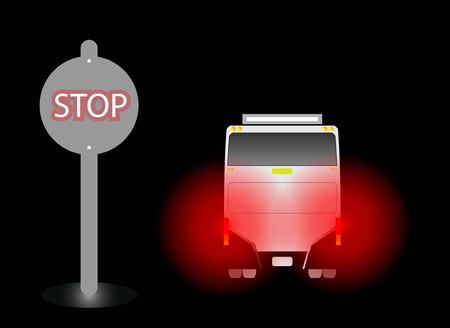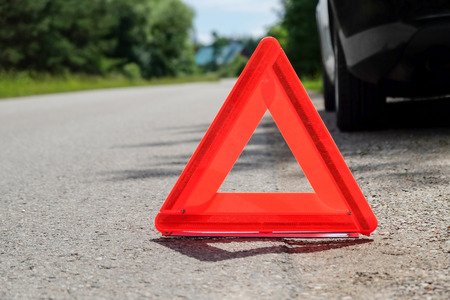Introduction to Road Signs and Signals
When you’re getting behind the wheel in the United States, one of the most important things you need to master is understanding road signs and signals. These signs and signals are more than just colorful markers or flashing lights; they are essential rules that keep everyone on the road safe—from drivers and passengers to cyclists and pedestrians. In the U.S., knowing what each sign means isn’t just a suggestion; it’s a requirement for safe and legal driving. Ignoring or misunderstanding road signs can lead to accidents, tickets, or even more serious consequences. That’s why every beginner driver should take time to learn what these signs mean and how to respond to them. By following these guidelines, you’re not just protecting yourself but also helping maintain a smooth flow of traffic and ensuring the safety of your community. Let’s start by understanding why these signs are so critical for anyone learning to drive in America.
Types of Road Signs
Getting familiar with the main categories of road signs is essential for safe driving in the U.S. Every sign you see on the road serves a specific purpose, helping drivers make quick, informed decisions. In general, road signs fall into three main types: regulatory signs, warning signs, and guide signs. Here’s a breakdown to help you recognize them easily when you’re behind the wheel.
Regulatory Signs
Regulatory signs tell you what you must or must not do by law. They usually have clear wording or symbols and are often red, white, and black. Common examples include:
| Sign Type | Example | What It Means |
|---|---|---|
| Stop Sign | STOP | You must come to a complete stop. |
| Speed Limit | SPEED LIMIT 55 | This is the maximum speed allowed. |
| No Parking | NO PARKING ANYTIME | You cannot park here at any time. |
| Yield Sign | YIELD | You must slow down or stop to give way to other traffic. |
Warning Signs
Warning signs alert you to potential hazards or changes in road conditions ahead. These are usually yellow with black lettering or symbols. Look out for these common warning signs:
| Sign Type | Example | What It Means |
|---|---|---|
| Curve Ahead | CURVE ARROW | A sharp turn is coming up—slow down! |
| Pedestrian Crossing | PED XING | Watch for people crossing the street. |
| Deer Crossing | DEER SYMBOL | Be alert for wildlife on the road. |
| Slippery When Wet | SLICK ROAD SYMBOL | The road could be slippery—drive carefully. |
Guide Signs
Guide signs provide helpful information about routes, destinations, services, and points of interest. These are usually green, blue, or brown with white letters. You’ll see these most often on highways and city streets:
| Sign Type | Example | What It Means |
|---|---|---|
| Highway Exit Sign | I-95 EXIT 24B MAIN ST. | Tells you where to exit and which direction to go. |
| Mile Marker Sign | MILE 120 | Keeps track of your location on highways. |
| Rest Area Sign | REST AREA 1 MILE AHEAD | Ahead is a place where you can stop and rest. |
| Lodging/Food/Gas Services Sign | SERVICE SYMBOLS (hotel/food/gas) | Tells you about nearby amenities. |
Quick Tip:
If you’re ever unsure about a sign’s meaning, don’t panic! Most U.S. states use similar designs and colors for each category—so learning these basics will help you stay confident wherever you drive.

3. Decoding Common Road Signs
When you’re just starting out behind the wheel, understanding what each road sign means is key to staying safe and following the rules. Let’s break down some of the most common signs you’ll see on American roads, along with practical tips on how to react to them.
Stop Signs
The classic red octagon that says “STOP” is easy to recognize. When you see this sign, always come to a complete stop at the white line or before entering the intersection. Look left, right, and then left again before proceeding. Remember: rolling stops aren’t legal—make it a full stop!
Yield Signs
Yield signs are triangular and usually red and white. They mean you must slow down and give the right-of-way to traffic in the intersection or roadway you’re about to enter. Only proceed when it’s safe and clear.
Speed Limit Signs
White rectangular signs with black numbers indicate the maximum legal speed for that stretch of road. Always follow these limits—even if other drivers are going faster—and adjust your speed for weather or heavy traffic conditions.
No Turn/No Entry Signs
Circular or rectangular signs with slashes or arrows indicate restrictions like “No Left Turn” or “Do Not Enter.” Obeying these helps prevent accidents and keeps traffic flowing smoothly.
School Zone and Pedestrian Signs
Bright yellow-green pentagon or rectangular signs signal school zones or pedestrian crossings. Slow down and watch for children or people crossing—fines can be higher in these areas, too.
Quick Tip:
If you’re ever unsure about a sign, slow down and look for more context: pavement markings, nearby signals, or other drivers’ behavior can help clue you in until you’re more confident reading signs on your own. The more you practice, the quicker you’ll recognize what each sign means—and how to respond safely every time.
4. Traffic Signals and Their Meanings
Understanding traffic signals is essential for safe driving in the United States. These signals use different colors and arrows to direct traffic flow at intersections, so knowing what each one means can help you avoid confusion and potential accidents. Let’s break down the basics:
Color Codes of U.S. Traffic Lights
| Light Color | What It Means for Drivers |
|---|---|
| Red | Stop completely. Do not enter the intersection until the light turns green. |
| Yellow | Prepare to stop. The light is about to turn red; clear the intersection if you are already in it. |
| Green | Go, but yield to pedestrians and vehicles still in the intersection. |
Arrows on Traffic Lights
Traffic lights often include arrows to indicate when drivers can make specific turns. Here’s what each arrow color means:
| Arrow Color | Direction | Action Required |
|---|---|---|
| Green Arrow | Left or Right (as indicated) | You have a protected turn in the direction of the arrow. Other traffic must stop. |
| Yellow Arrow | Left or Right (as indicated) | The protected turn is ending. Prepare to stop unless you are already turning. |
| Red Arrow | Left or Right (as indicated) | No turns allowed in the direction of the arrow until it changes. |
Blinking and Special Signals
- Blinking Red Light: Treat this like a stop sign—come to a full stop, then proceed when safe.
- Blinking Yellow Light: Slow down and proceed with caution.
- Blinking Yellow Arrow: You may turn in the direction of the arrow after yielding to oncoming traffic and pedestrians.
- Blinking Green: Some areas use this for advanced left turns—follow local signage and rules carefully.
Navigating Intersections Safely
If you’re ever unsure about a signal, remember: safety first! Don’t rush through yellow lights, always yield to pedestrians, and never enter an intersection if you can’t clear it before the light changes. Familiarity with these signals will give you confidence on any American road.
5. Tips for Remembering Signs and Signals
Feeling overwhelmed by all the road signs and signals? Don’t worry—every new driver has been there! Here are some easy strategies and memory tricks to help you remember the most important signs and signals, making your driving experience safer and less stressful.
Group Signs by Shape and Color
One of the quickest ways to recognize road signs is by grouping them based on their shape and color. For example, red octagons always mean STOP, while yellow diamonds are warning signs. Practice matching shapes and colors with their meanings to make quick decisions on the road.
Create Flashcards or Use Driving Apps
Flashcards are a classic study tool for a reason! Write the sign or signal on one side and its meaning on the other. Quiz yourself regularly. Alternatively, there are plenty of free apps designed to help you study U.S. road signs. Find one that fits your style and spend a few minutes each day reviewing.
Make Up Fun Mnemonics
Mnemonics are catchy phrases or associations that make memorization easier. For instance, remember “Red means Stop, Yellow means Caution, Green means Go” for traffic lights. Create your own silly sentences to link tricky signs with their purpose—you’ll be surprised how much it helps!
Practice During Real Drives
The best way to reinforce your memory is through real-world practice. As a passenger, challenge yourself to identify as many signs as you can during car rides. When you start driving, say the name of each sign out loud as you approach it—this active engagement cements your knowledge.
Don’t Stress—Mistakes Are Part of Learning
No one gets every sign right from day one! If you forget a meaning, look it up later and try again next time. With regular practice and these simple tips, remembering signs and signals will become second nature—and you’ll feel more confident every time you get behind the wheel.
6. What to Do if You’re Unsure
No matter how well you study road signs and signals, you’ll eventually encounter something new or confusing while driving. Don’t panic—everyone’s been there! Here’s some real-world advice to help you stay confident and safe when faced with unfamiliar signs or signals:
Stay Calm and Slow Down
If you’re unsure about a sign or signal, the best move is to reduce your speed and give yourself time to process what’s ahead. Slowing down not only helps you make better decisions but also keeps you—and everyone around you—safer.
Look for Context Clues
Often, nearby signs, road markings, or even other drivers’ actions can help you figure out what a confusing sign might mean. For example, if others are merging, slowing down, or stopping, it’s a good hint that you should do the same.
Don’t Be Afraid to Pull Over
If you ever feel completely lost or unsure, it’s okay to safely pull over to the side of the road or into a parking lot. Take a moment to look up the sign on your phone (if local laws permit) or review your driver’s manual before continuing.
Use Your Resources
Apps like Google Maps often show current road conditions and can alert you about construction zones or detours. Familiarizing yourself with these tools before hitting the road can make a big difference in unfamiliar areas.
Ask for Help
Don’t hesitate to ask a passenger, call a trusted friend, or even stop at a gas station to get clarification on local signage. Most people are happy to help—especially if it means keeping everyone safer on the road.
Remember: Being cautious is always better than making risky guesses. Trust your instincts, stay alert, and never be embarrassed about taking extra time to understand the road ahead. Safe driving is smart driving!
